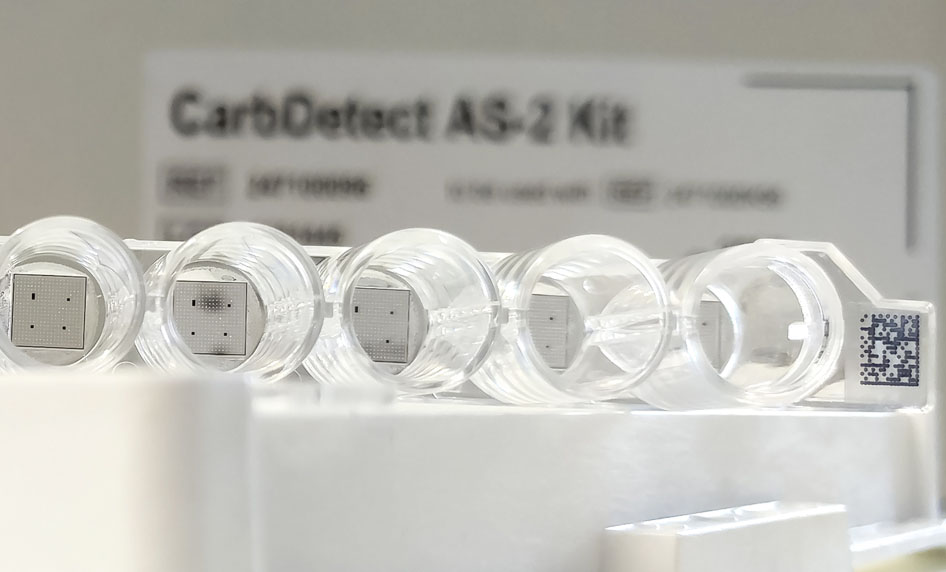Multi-resistant pathogens are spreading faster and faster worldwide. Some gram-negative bacteria found in the human intestines, for example, are already capable of rendering reserve antibiotics, such as carbapenems, ineffective. This is carried out by special enzymes – so-called “carbapenemases.” As part of the InfectoGnostics campus project “Diagnostics for Pneumonia during Immunosuppression,” a microarray-based test has, therefore, been developed that can determine the diverse genetic information of carbapenemases. This “CarbDetect AS-2” kit was launched by Abbott (Alere Technologies GmbH) in 2016 as the first product to result from the research campus cooperation and has been successfully marketed since then.
The test has now been validated by InfectoGnostics researchers together with Pakistani scientists in a clinical environment. A total of 7857 patient samples were collected at the Rawalpindi Kidney Center in northeastern Pakistan, 425 samples of which had gram-negative bacteria that were able to be isolated. Using "CarbDetect AS-2", all relevant resistance genes were determined and compared with reference strains of bacteria that had previously been analyzed using other molecular and phenotypical methods (e.g., sequencing, PCR, and VITEK).
Best Prerequisite for Further Development into Point-of-Care Testing
The result of validation: 98.8% of the detected resistance genes from the clinical samples matched those from the reference samples, and a very high value was also achieved in the phenotype – the actual expression of a genetically predisposed resistance in the bacterium – with 85% agreement. “We were able to show that the assay enables reliable testing of resistance in the laboratory and also has the potential to be further developed into a point-of-care test,” reports Abbott scientist Dr. Sascha Braun, one of the two main authors of the study.
For the validation of their test, the Jena researchers had specifically chosen a clinic in Pakistan. In this country – similar to the neighboring country India – multi-resistant bacterial strains are already widespread among the population, explains Sascha Braun: “We wanted to evaluate the test in an environment in which there is already a particularly great medical need for the exact, rapid, and cost-effective determination of resistance. Our test had to prove that it also detects resistance genes that are still rare in Germany. CarbDetect passed this test with flying colors.”
Dr. Ralf Ehricht, senior author of the study and member of the InfectoGnostics board of directors, sees the successful validation of the test as a major step for the research campus: “Without the public-private partnership on campus, it would not have been possible to produce the test in this form and at this speed. It is a small but important contribution to contain the immense global problem of antibiotics-resistant bacteria.”
High-Tech Detection via a Microarray: Up to 700 Capture Molecules on a 4x4 Millimeter Glass Chip
So-called “ArrayStrips” form the basis of CarbDetect – a test system in strip format that can be combined to microtiter plates. The strips consist of eight individual cavities with a microarray of glass integrated into the bottom – a chip measuring only 4 mm x 4 mm, which is the heart of this system: Up to 700 individually different capture molecules for DNA or proteins/peptides can be applied to its surface in a checkerboard pattern. The labelled DNA – for example of a resistant bacterium – can bind to these probes in the test in a way that leads to a staining of this individual point on the chip’s surface. The derived pattern on the chip matrix is finally evaluated using readout units and allows the exact genotyping (presence or absence of genes) of the bacterial strain and its resistance genes.
